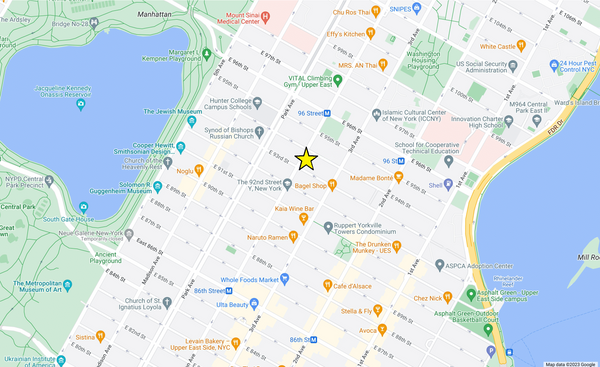Cookbook Club: Latin American Cookbook
Oct 30, 2022
Welcome to the first book of our Autumn 2022 season of Cookbook Club! Our theme is Savoring the Diverse Flavors of Latin America, and it’s even more exciting for me because I am writing this post from Peru where I am hosting a culinary journey through Lima, Cusco, and the Sacred Valley. A dream come true, and perfectly aligned with our first book, The Latin American Cookbook by Virgilio Martínez.
Latin America is a broad term for a collection of around 33 countries, including parts of the Caribbean and 17 countries in Central and South America. Latin America includes more than half of earth’s natural biodiversity. It’s also one of the most influential regions in terms of culinary culture in the past millennia and beyond.
The Latin American Cookbook includes recipes and cultural wisdom from at least 20 of those richly diverse countries. Although Martínez and the folks at Phaidon make a noble effort to be inclusive and representative, even this 432 page book of 600 recipes barely scratches the surface. But it’s a great start! And certainly, an apt beginning for our upcoming cooking journeys this season.

“Food talks, sometimes a lot.”
–Virgilio Martínez, from the introduction to The Latin American Cookbook
More About The Latin American Cookbook
“… our cuisine was born from a variety of geographical roots: by cultures that built ancient cities, left faint traces, were brought forcibly to the region, displaced by war and a changing climate, and came from the furthest reaches of the globe in search of a better life.”
–Virgilio Martínez, from the introduction to The Latin American Cookbook
Our cookbook club loves a lively discussion! Topics jump from ingredients and substitutions, culture and social issues, art and music, beverage pairings, and on to design and editing of the physical book itself. This book brought up all those things, sometimes all at once!
Organization
The table of contents of the Latin American Cookbook groups recipes by broad ingredient categories. This proved to be a divisive decision with strong reasoning coming from each side. Many found categorizing by ingredient needlessly complicated. It did not suit the way they use their cookbooks. Some would have preferred grouping by course in a meal, others would like to see recipes listed by country.
Of those in favor of the ingredient based categorization, several participants noted a preference purchasing ingredients then looking for great recipes to use them in. Others – myself included – who use their cookbooks as references more than for cooking, found the ‘by ingredient’ design great for comparing uses for each ingredient, noting regional and cultural similarities and differences.
Lines Drawn
Then came the question of who’s included, and who’s not. The Dominican Republic, Cuba, and Puerto Rico are notably absent from the content of this book. I’d love to hear in the comments if you’d like to contribute your thoughts on that decision.
Another line drawn with regard to content is one very much expected given the author of the book. Authenticity is paramount. Some ingredients required may prove challenging for North American and European cooks to obtain. And some of those have no acceptable (to Martínez?) substitutions. No further explanation is offered.
Personally, I would have liked more notes on specific types of chiles and herbs. Are the fresh or dried? Can you substitute the jarred paste that’s available in the US for fresh? Is there something similar that would work in a pinch, even if not authentic?
At least I know if I want to make the rhea egg recipe, I can substitute ostrich egg… if I must.
Speaking of authenticity, I’d be remiss not to note the number of comments about the chapter that included insects, cuy (guinea pig), and types of offal that are not typically consumed in the US. Although we all acknowledged the importance of having this knowledge, there were a few people who were turned off immediately when they opened the book to this section without advance warning.
About The Author
Virgilio Martínez is a Peruvian chef, restaurateur, and author of several books. Most notably, he is one of the founding partners (along with his sister Malena and wife, world-class chef Pía León) of Mater Iniciativa, a gastronomic collective that includes world-famous restaurant Central in the Barranco district of Lima, and several others globally.
In their words, the mission of Mater Iniciativa is to “Promote megadiversity without borders. Be a source of knowledge for the world about food; educating, raising awareness and conveying knowledge. Design food experiences that communicate values such as connectivity (with nature and between people), cultural identity, respect and care for the environment around us.”
Other books by Virgilio Martínez include, Mater Catalogue: 30 Species for Central (with Malena Martínez), Central, and Lima: The Cookbook.
The Cooking Part…
For each cookbook I create a menu featuring a selection of recipes – like an assignment. This provides some structure for prep and for our conversations. They’re only suggestions, and many people experiment with whatever strikes their fancy. This round I also included some challenges for those who wanted to push their limits a bit.
A note on this recipe list: You may notice the absence of dishes from Mexico. There’s a reason for that… Mexico features prominently in an upcoming season: stay tuned!

Notes On What We Cooked
Street Cart Ceviche: Want to learn how to make a true Peruvian ceviche? This is the recipe you’re looking for. Simple, concise, delicious, and truly authentic. I can vouch for that now… I’ve had it a few times in Lima recently, and even learned to make it from a local chef. The leche de tigre alone is worth owning a blender. Don’t skip the garnish either. The sweet potatoes provide balance, and the crunchy corn is addictive. That, by the way, is a separate recipe: Cancha Serrana. You can get the dried corn online easily enough. You’ll be happy you did. Want to see a video of me making this recipe? You can find it here!
Empanadas: There are several recipes for empanadas from various places in the Latin American Cookbook. The consensus was positive, and a wild mushroom version was a star. Note that a couple dough recipes received less than stellar reviews… not bad enough to prevent further experimentation though!
Bahia-style Shrimp: Thickening stews with grated yuca (cassava) is a very good thing. Seems that cassava flour will also do in a pinch. The result is silky and rich, a unique and appealing texture. Personally, I made a mash up of two shrimp recipes that were very similar. Experimentation is encouraged and rewarded!
Peruvian Lamb Cilantro Stew: Super tender, very spicy, and a crowd pleaser according to the one person who made it so far… the description was enough to make several (including me) vow to add it to this season’s “to cook” list.
Cheese, Corn, & Lima Bean Salad: This salad is all that. It says lima beans in the title, but fava beans in the recipe. Do yourself a favor, wherever this book calls for favas, go right to frozen baby lima beans and skip the expense and crazy amount of prep that favas demand. This salad will be on regular rotation for summer gatherings from now on.
Pine Tarts: That’s Guyanese pineapple hand pies to the uninitiated. This was another dough recipe that left the cook challenged to try, try again. But the caramelized pineapple filling made for a truly authentic experience and dreamy flashbacks to happy visits to this lesser-known Latin American region.
Brigadeiros: Brazilian-style milk fudge balls coated in chocolate sprinkles, coconut, or other fun shakes. What’s not to love about sticky rich condensed milk, cocoa, and a ton of chocolate sprinkles? The teens in my house enjoyed making them, we all enjoyed eating them!
In Closing, for now
I hope you’re enjoying being a part of this season’s cookbook club. I will write about all the books our cookbook club cooks from here. If you’d like to catch up with past seasons’ books, you can get started HERE.
As always, I want to thank Kitchen Arts & Letters bookstore and all our friends at the 92nd Street Y for creating these programs that provide great opportunities for furthering food and drink scholarship and enrichment.


